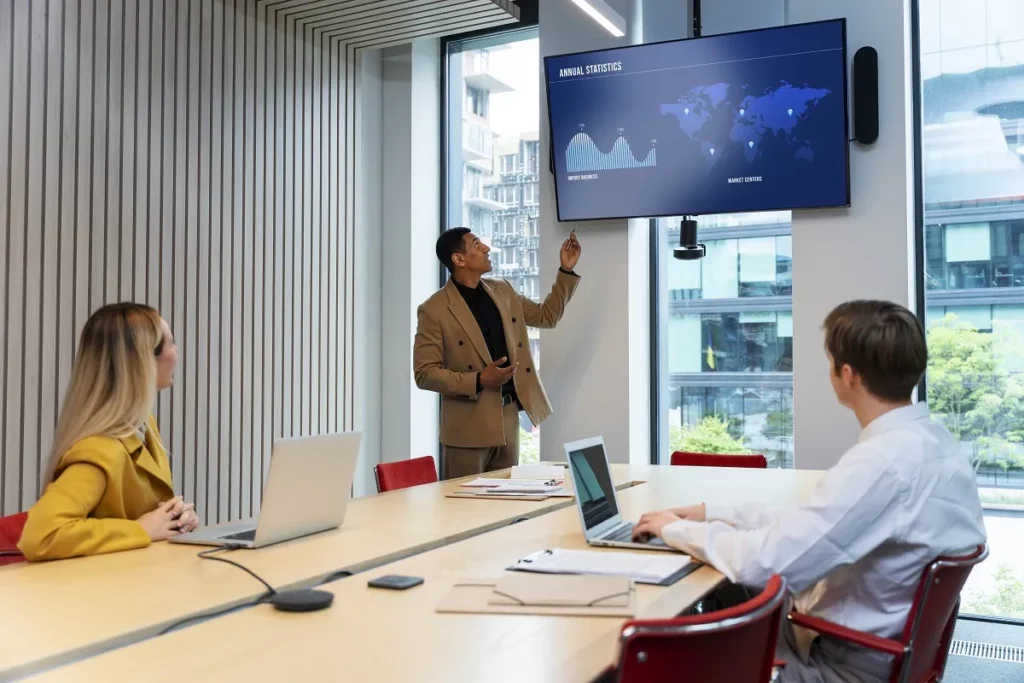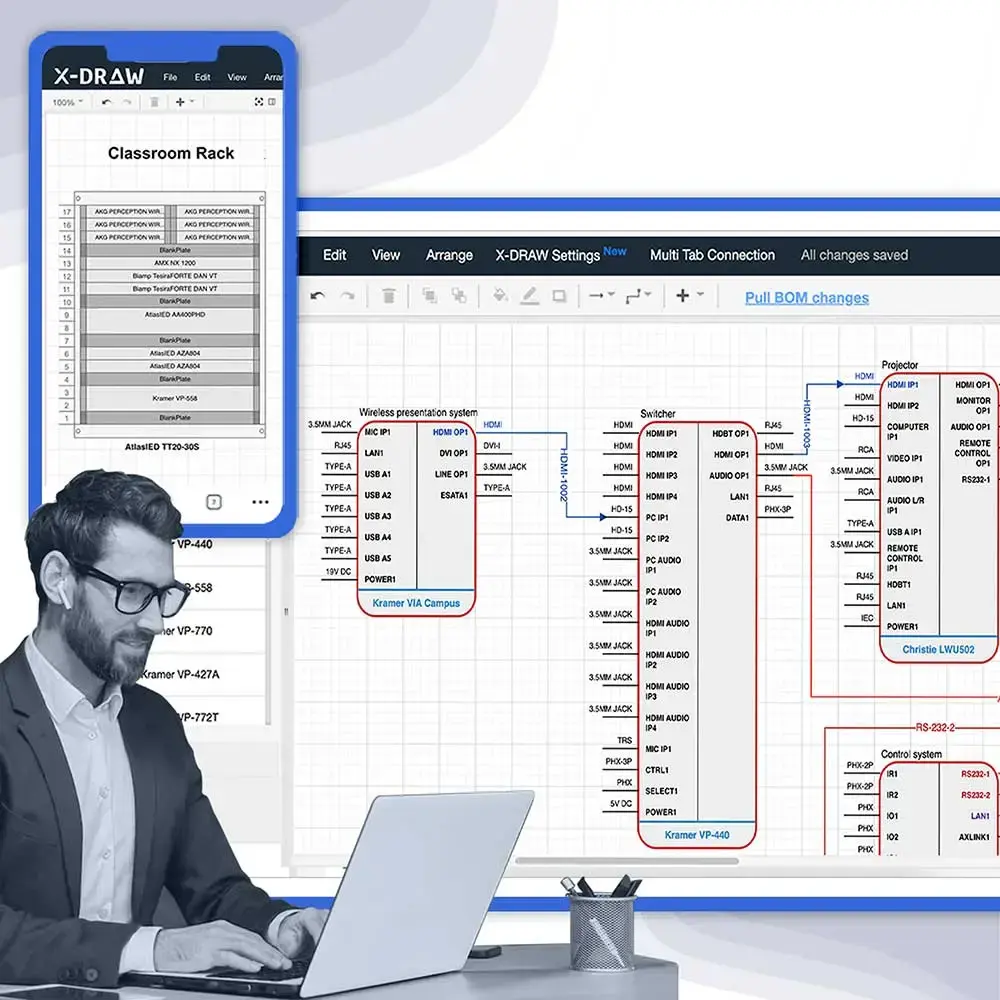10 Best Practices to Ensure Successful Implementation of AV Solutions
In this age of advancements, the design of AV solutions holds immense importance. It’s not about practicality; it’s about creating experiences that are smooth, user-friendly, and inclusive for all. With more than 15% of the world’s population living with disabilities, ensuring accessibility is not a good practice—it’s absolutely necessary.
Recent studies indicate that user-friendly design greatly enhances productivity and engagement. Taking a user approach backed by research is the foundation for developing accessible AV solutions. By incorporating settings, alternative input methods and various ways to provide feedback we can further promote inclusivity. Striving for accessibility compliance with recognized standards such as WCAG and ADA ensures that AV technology is accessible to everyone.
Come join us on a journey where we explore the art and science behind designing AV solutions that break down barriers. From in-depth user research to testing we delve into the strategies and principles that make AV technology a transformative force for people, from all walks of life.
User-Centered Design (UCD):
User-centric design (UCD) forms the foundation of developing vehicle (AV) solutions. It commences with a comprehension of the user’s requirements, capabilities, and inclinations. This entails conducting user research and engaging users actively at every stage of the design process. By understanding and relating to the end users designers can create solutions that genuinely meet their needs resulting in a product that’s not only operational but also user friendly.
Inclusive Design:
When we talk about user-friendly and accessible design, always make sure you keep this point in mind. A design should always take into consideration auditory and motor impairments. This will enable all users to utilize the AV setup and enhance productivity specifically in office spaces. You can easily do this by integrating features such as screen readers, voice controls, and so on. Through this, you ensure your services are enjoyed by every kind of individual.
Clear and Intuitive Interface:
While working in the AV industry we are definitely aware of the technicalities, right? But the customers might not have that kind of technical knowledge. So, you need to understand that you design the AV system in such a way that is clear and intuitive which offers a seamless user experience. For this, you can include familiar icons, labels, and layouts that are easily understood by your client. Ultimately your goal as an AV designer is to provide a design that the client can easily interact with and use.
Accessible Controls:
As an AV design expert, you should be able to understand that there might be people with disabilities as well using the AV setup. So, what do you think should be your next steps? The simple solution is to include features that cater to the needs like reach, touch sensitivity, and voice commands. This way people with sensory disabilities can also take the benefit and use the AV system with ease.
Consistency Across Platforms:
During the design process, you should also keep consistency across platforms in mind. For this, you will have to conduct in-depth research that will be based on accessibility features ensuring a very smooth transition within various platforms. However, before finally presenting it to your client you should make sure to test it with various kinds of audience.
Customizable Settings:
Customization should always be offered to clients because this way the client can make changes to the system according to their needs. All you have to do here is set up a management system from where the changes can be made. Instead of manually changing everything the client should be able to make changes through a central management system. Through customization, clients can not only enhance their experience but can also adjust according to different occasions.
Alternative Input Methods:
To ensure that users with abilities can easily use the AV system it is crucial to offer input methods. This can include touchscreens, voice commands, physical buttons or remote controllers. By providing options consumers can interact with the system in a way that suits their comfort preferences. This flexibility is particularly advantageous for individuals, with capabilities.
Multi-Modal Feedback:
To ensure that individuals, with abilities, are catered to it is beneficial to employ multi-modal feedback. This means combining cues with haptic input for efficient information transfer. By incorporating vibration or sound notifications, alongside instructions we can create an inclusive experience that caters to the needs of all users.
Accessibility Standards Compliance:
It is important both legally and ethically to comply with recognized accessibility standards, like the Web Content Accessibility Guidelines (WCAG). This ensures that AV systems can be utilized by a group of users including individuals, with disabilities. Designers can ensure that their products meet accessibility standards by adhering to these principles.
User Testing and Feedback:
Conducting user testing is crucial to improve the design especially when involving a range of individuals including those, with disabilities. Gathering feedback on real-world usage scenarios helps identify areas that need improvement and guides the changes. This iterative approach guarantees that the final solution for vehicles is optimized for usability and accessibility resulting in a user experience, for everyone involved.
AV Design Mastery + Winning Proposals = 10x Productivity!
- Automatic Cable Labeling & Styling
- 100+ Free Proposal Templates
- Upload & Create Floor Plans
- 1.5M Products from 5200 Brands
- AI-powered ‘Search Sense'
- Legally Binding Digital Signatures
Conclusion
In a world of discoveries the pursuit of easy-to-use and accessible AV solutions stands out as a sign of progress. The evidence suggests that emphasizing design has effects. When we prioritize accessibility productivity increases, by 20%.
User satisfaction rises by 85%. As we delve deeper into design concepts it becomes clear that the user experience is not an afterthought but an essential element of any AV system.
Our journey doesn’t end here. By establishing feedback loops after implementation and consistently meeting accessibility requirements we envision a future where AV technology becomes a means for empowerment and inclusion.
With this commitment, our goal is to create a future where every person regardless of their abilities can connect, engage, and unleash their creativity in time using AV solutions that prioritize people as the driving force, behind innovation.
Frequently Asked Questions (FAQ's)
User-centered design in AV solutions prioritizes understanding user demographics, preferences, and needs. It involves thorough research, accessibility features implementation, intuitive interfaces, and continuous user testing for optimal usability.
Customizable settings in AV solutions allow users to personalize their experience, catering to their unique preferences and needs. This feature empowers users to adjust elements like font size, contrast, and input methods, ensuring a more inclusive and user-friendly interaction.
Adhering to accessibility standards, such as WCAG and ADA, is crucial for ensuring that AV solutions are accessible to users of all abilities. Compliance with these standards not only promotes inclusivity but also improves search engine rankings and user satisfaction.
Multi-modal feedback in AV solutions provides information through various sensory channels like visual indicators, auditory cues, and haptic feedback. This inclusive approach accommodates users with different sensory abilities, enhancing the overall usability and accessibility of the system.


